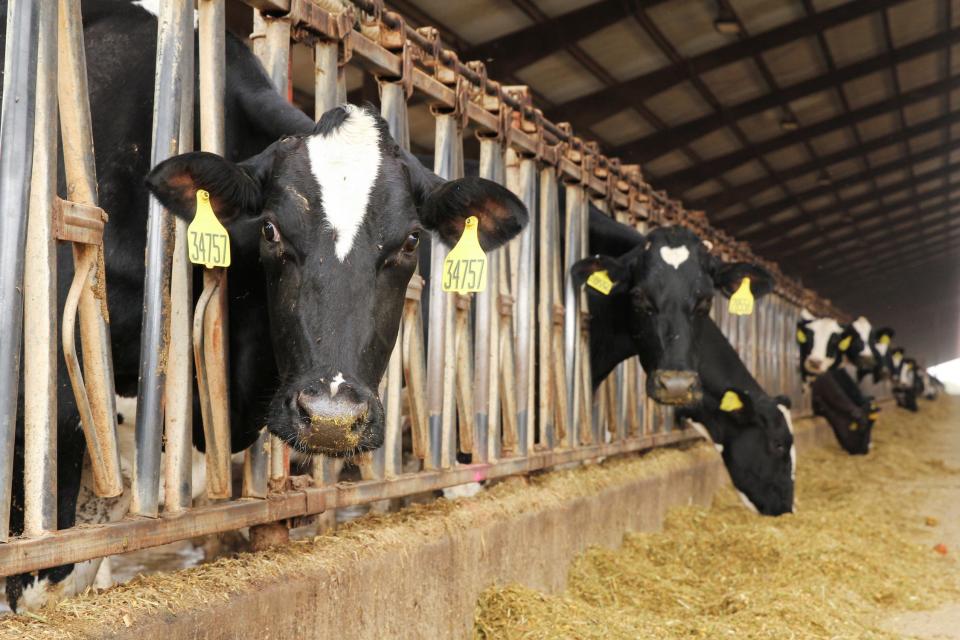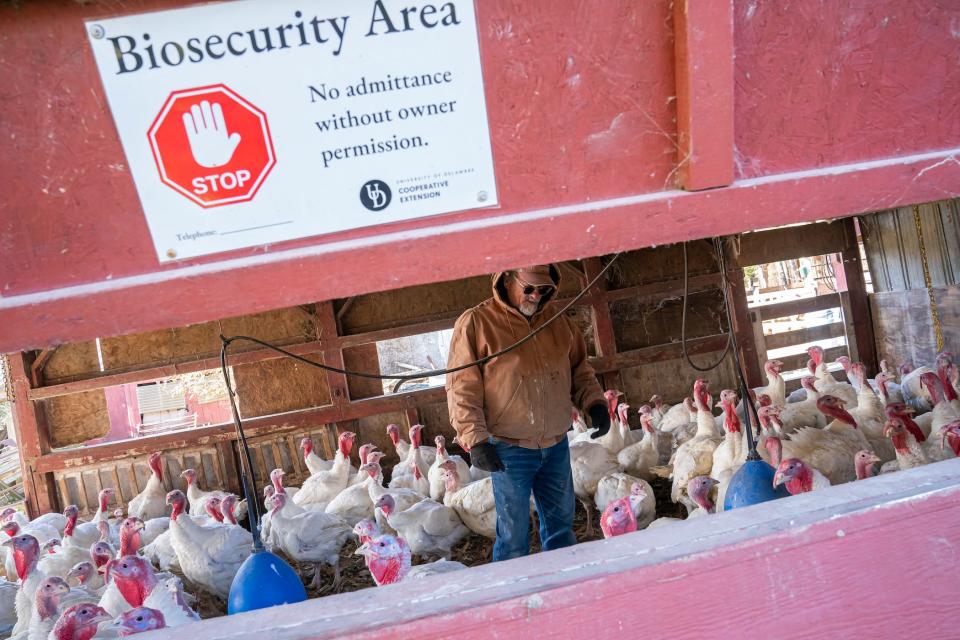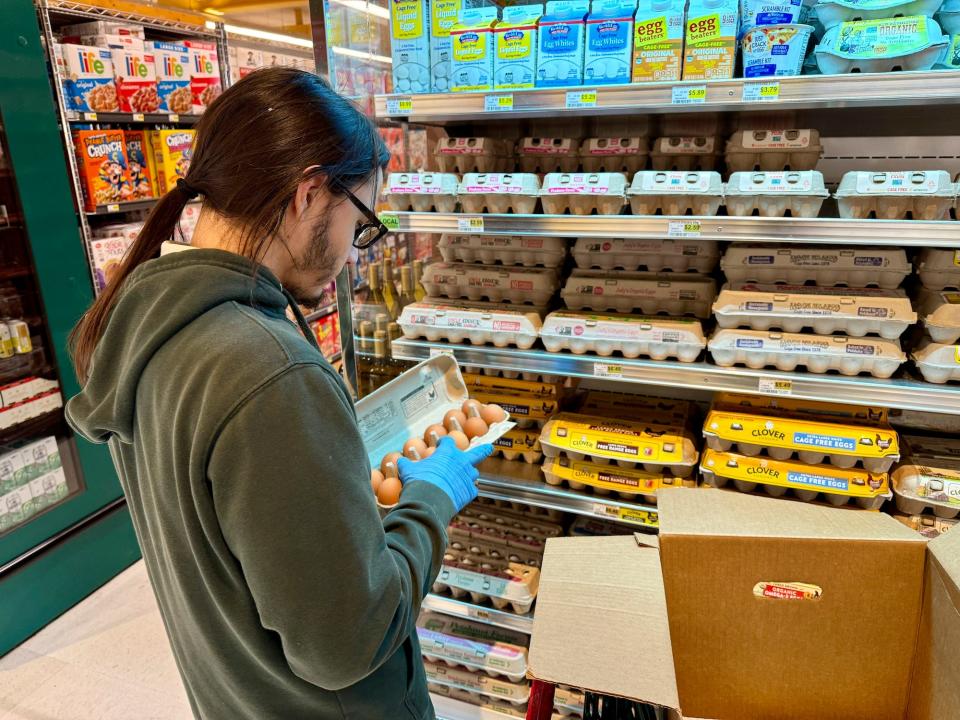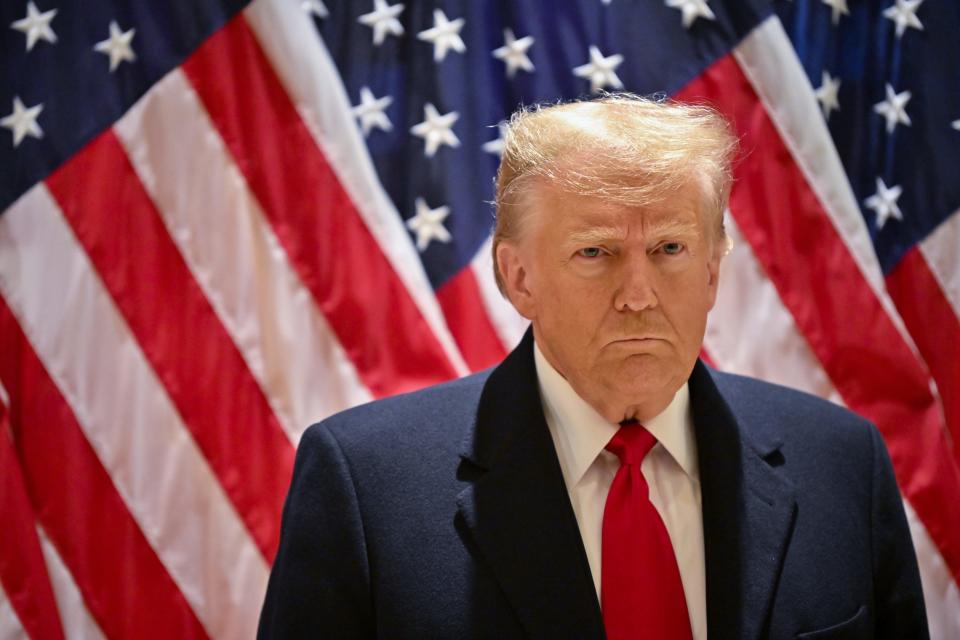-
The H5N1 bird flu virus is spreading through US cattle herds for the first time.
-
Scientists are concerned because of the mammal-to-mammal transmission that the virus could mutate to spread between humans.
-
Former surgeon general Jerome Adams fears that the United States is repeating the mistakes of 2020.
Bird flu is flying wild. In recent months the highly pathogenic H5N1 virus has been spreading through US cattle herds for the first time ever.
Cow-to-cow transmission is the latest spike in a global outbreak that began when the virus re-emerged in Europe in 2020. Thousands of birds and more than 40,000 sea lions and seals have been killed in South America since shin.
The World Health Organization’s chief scientist Jeremy Farrar called this an “animal pandemic” on 18 April.
Genetic fragments of the virus, found in grocery store milk on Tuesday, suggest the cattle outbreak is more widespread than officials believed, the Washington Post reported.
Experts told the Post that pasteurized milk is still probably safe to drink. Pasteurization inactivates pathogens, including likely H5N1, according to the Food and Drug Administration. However, no study has specifically tested whether pasteurized milk inactivates H5N1. According to the New York Times, the FDA is now testing that.

One person in Texas has tested positive for the virus after being exposed to dairy cattle. According to the US Centers for Disease Control and Prevention, that person’s only symptom was eye redness.
There was no person-to-person transmission. Still, a future mutation could allow the virus to spread more easily to and between people – a “very worrying” possibility for Farrar.


Dr. Jerome Adams, former surgeon general and director of health equity at Purdue University, is having deja vu.
“If it continues to spread in animals, then it will eventually cause problems for humans, either because we don’t have food because they have to start exterminating herds, or because it starts jumping in humans,” Adams, who served under former President Donald Trump and was on the administration’s initial COVID-19 task force, Business Insider said. “The more it replicates, the more likely it will mutate.”
While he agrees with the CDC’s assessment that the current risk to humans is low, Adams fears that the US is making many of the mistakes it made in the early days of COVID-19.
Weak messages with no clear leaders
Who is in charge of the US animal pandemic? The CDC? The US Department of Agriculture? The FDA?
The answer is, sort of, all of them. That decentralized responsibility could be behind the widespread lack of clear public messaging so far.
For example, Adams says his diet hasn’t changed, as pasteurization and proper cooking procedures should kill any live virus present. But it is not certain that everyone is getting the message.
He compared it to the development of COVID-19 vaccines, when people didn’t trust a process they didn’t understand.


“The public needs good, consistent communication from the White House, from the USDA, helping to reassure them of what the process is to keep them safe,” Adams said.
Apart from consumers, the people most at risk are agricultural workers or anyone with close or prolonged exposure to chickens or cattle. Those are the groups that need strong, targeted guidance right now, Adams said.
One test on the sick
Until now, the USDA has only been testing cattle herds when an animal appears to be sick. That means asymptomatic spread may be flying under the radar.
“An animal can’t tell you, ‘Hey, I’m feeling a little under the weather today.’ So they’re literally waiting until an animal collapses or shows fatigue or shows serious symptoms,” Adams said. “We need a testing strategy that is proactive and allows for real surveillance, and not reactive.”
The USDA took a step forward on Wednesday, mandating that all lactating dairy cows be tested for H5N1 before being moved across state lines and that all positive test results must be reported.
New York Times columnist Zeynep Tufekci reported the same day that the USDA was not, so far, keeping track of positive test results in cattle.
election distraction


In late 2019 and early 2020, the big news story was the impeachment, and later acquittal, of President Trump. Now Trump has another try at the forefront of the news.
And, as in 2020, this is an election year.
“The Biden administration, especially the White House, has been extremely quiet on this bird flu situation. Why? It seems to me that they don’t want to scare the public and the economy. destroyed in an election year,” Adams said.
Business vs public health
Just as the lockdowns of COVID-19 were devastating to the restaurant and hospitality industries, a crackdown on bird flu can be devastating to the chicken industry.
The treatment for an outbreak of bird flu is to kill all the chickens. Even before that, testing the herd can only slow down production.
“We’re seeing the same tension between business interests and public health interests,” Adams said.
In addition, many of the workers who handle chickens and cattle are undocumented immigrants. That can make them and their bosses hesitate to call authorities on sick animals.
Many vulnerable groups were reluctant to report illness in the early days of COVID, too, including migrant workers and people who did not have sick leave from work.
“My concern is that we will continue to make the same mistakes over and over again,” Adams said. “Because we keep focusing on the wrong things instead of focusing on the root causes.”
Read the original article on Business Insider